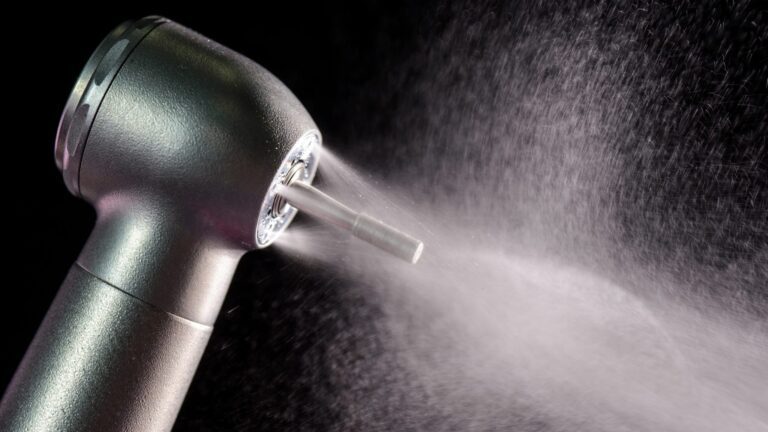Because it matters
Untreated dental units cannot reliably produce water that meets drinking water standards (which is less than 500 CFU/mL of water heterotrophic bacteria). On October 31, 2022, the CDC released a Health Advisory Notice communicate the importance of following existing recommendations for maintaining and monitoring dental water lines.
Background
Biofilm is a thin, slimy film of bacteria that sticks to wet surfaces. Dental facility water lines have unique characteristics that make them susceptible to biofilm formation, including large, small-diameter pipes, low flow rates, and frequent periods of stagnation.
Large numbers of common water bacteria can be found in untreated dental facility water systems, including Legionella, Pseudomonas aeruginosaand non-tuberculous Mycobacteria. These bacteria can cause serious, sometimes life-threatening infections.
Contaminated water from dental units has been linked to outbreaks Mycobacteria infections in children. Case reports also document infections with Mycobacteria and Legionella after endodontic procedures, extractions of third molars and general dental work. In these reported cases, water samples taken from the dental clinics showed bacteria levels well above recommended levels and reported breakdowns in infection prevention procedures to maintain and monitor dental water quality. These reports highlight the need for education to improve understanding of the fundamentals of dental unit water quality maintenance and monitoring, recommended practices, and their application in dental settings.
Special considerations
For surgical procedures, sterile saline or sterile water should be used as a coolant or irrigant. Conventional dental units cannot reliably provide sterile water even when equipped with independent water tanks containing low-microbial or sterile water because the water-carrying path cannot be reliably sterilized. Appropriate delivery devices should be used to administer sterile water during the procedure. Examples include bulb syringes. sterile disposable products. or sterile water supply systems that bypass the dental unit using sterile disposable or sterilization tubes.
Frequently asked questions
There are many commercial products and devices available for the disinfection and maintenance of dental unit ducts, including:
- Self-contained water systems (eg independent water tank) combined with chemical treatment (eg periodic or continuous chemical microbicide treatment protocols).
- Systems designed for single chair or whole practice water lines that condition or treat incoming water to remove or inactivate microorganisms.
- Combinations of these methods.
Products available to treat water lines include tablet systems, continuous release straws and cartridges, initial and periodic shock treatments, and central systems. All products and systems must be used and maintained in accordance with the manufacturer’s instructions for use (IFU). If you have questions about IFUs, contact the manufacturer of the therapy product or device you are using.
The unit should be treated according to the manufacturer’s IFU and retested immediately after treatment. If a unit remains resistant to treatment over time, you may need to replace water lines or other water-bearing components.


